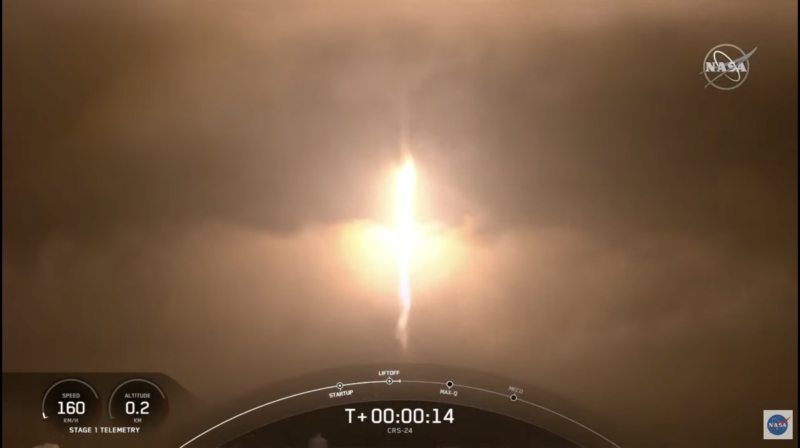
A record-setting fifth Falcon 9 of the month lit up the Space Coast’s pre-dawn sky at 5:07 a.m. EST Tuesday, as SpaceX smoothly delivered its next Cargo Dragon to the International Space Station (ISS).
Laden with 6,500 pounds (2,590 kilograms) of payloads, equipment and supplies for the resident Expedition 66 crew, the CRS-24 mission—flying under the second-round Commercial Resupply Services (CRS2) contract with NASA—will embark on a day-long rendezvous profile, before autonomously docking at the space-facing (or “zenith”) port of the station’s Harmony node about 4:30 a.m. EST Wednesday.
Overseeing tomorrow’s docking will be U.S. astronauts Tom Marshburn and Raja Chari. The Cargo Dragon is expected to spend a month at the ISS before returning home in late January.
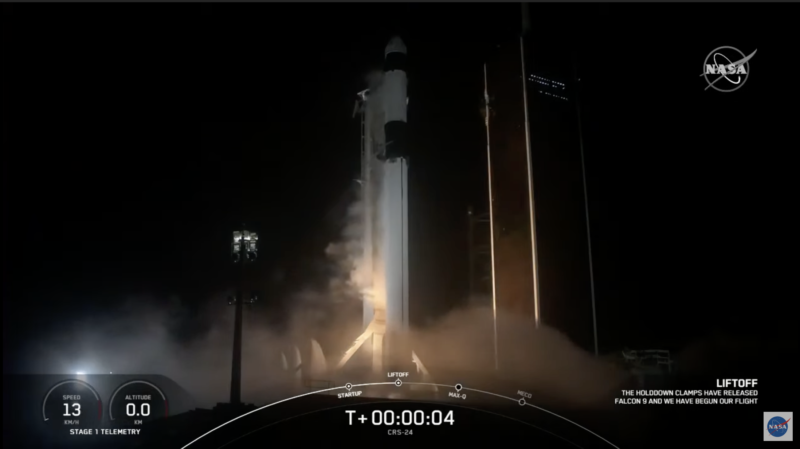
This morning’s launch marked the 31st and last SpaceX flight of 2021, capping off a banner year for the Hawthorne, Calif.-headquartered launch services organization. Those missions were achieved by ten Falcon 9 cores, one of which flew no less than six times between January and December.
Their list of accomplishments included the shortest interval—only 27 days—between any two launches by the same orbital-class booster and the greatest number of discrete payloads (143) ever lifted by a U.S. launch vehicle.
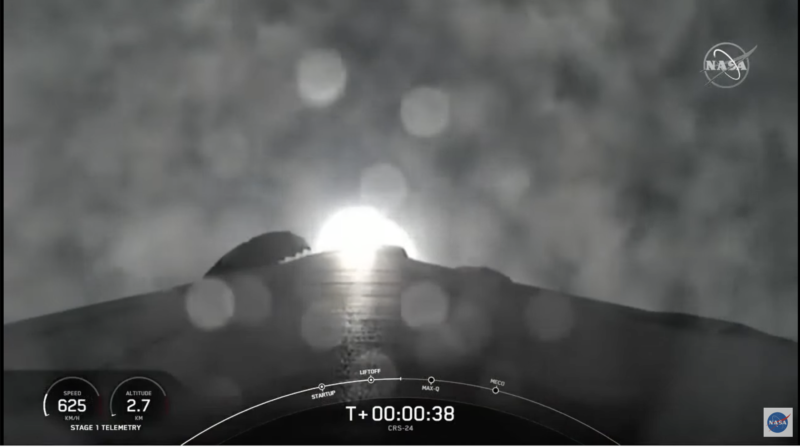
Three Cargo Dragons, three Crew Dragons—including September’s historic, all-civilian Inspiration4—established an (almost) unbroken presence of at least one SpaceX vehicle in orbit throughout the year.
Three powerful geostationary communications satellites for Ankara-based Türksat and New York-headquartered SiriusXM, a Block III Global Positioning System (GPS) for the U.S. Space Force, NASA’s Double Asteroid Redirection Test (DART) and Imaging X-ray Polarimetry Explorer (IXPE) missions and no less than 989 low-orbiting Starlink internet communications satellites have also soared aloft from the Space Coast or Vandenberg Space Force Base, Calif. Records were also set for the first Falcon 9 cores to launch eight, nine, ten and 11 times.
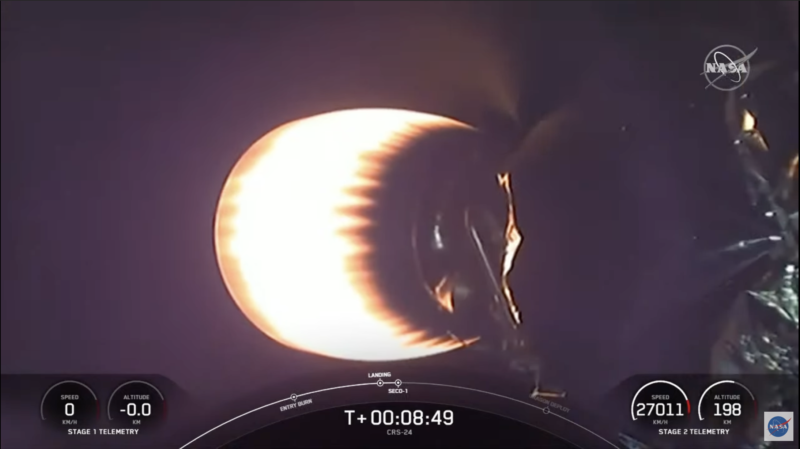
And of those 31 flights, all but two used reflown Falcon 9 cores. The significance of that fact cannot be underestimated. Back in 2017, when SpaceX launched its first previously-flown booster, five out of 18 missions—about 28 percent of the total number of flights that year—employed “used” Falcon 9 cores.
That percentage-share climbed to 60 percent in 2018, 73 percent in 2019, 81 percent last year and 93.5 percent as 2021 draws to its close. And this morning’s flight also marked the 100th successful recovery of a Falcon 9 core, with 23 on-point touchdowns on solid ground since December 2015 and 77 on the deck of the Autonomous Spaceport Drone Ship (ASDS) since April 2016.
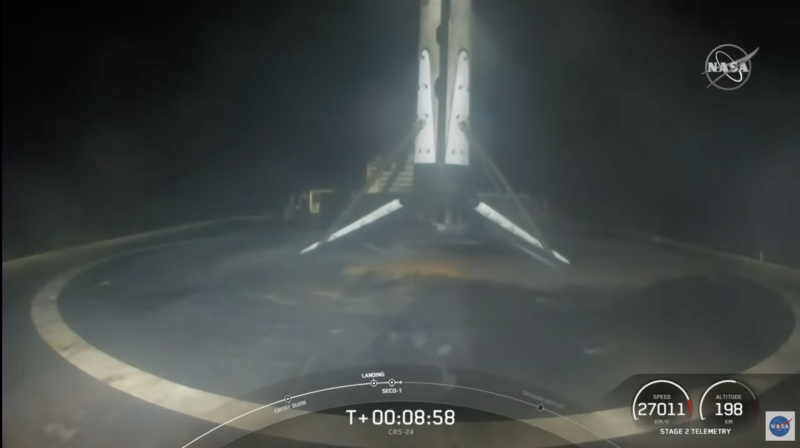
As such, the brand-new booster (tailnumbered “B1069”) which lifted CRS-24 to orbit this morning was something of a rarity, not least in view of her glistening state as she rolled out of the Horizontal Integration Facility (HIF) to historic Pad 39A at the Kennedy Space Center (KSC) on Sunday. In fact, it was the Cargo Dragon itself that had seen prior service, having supported the month-long CRS-22 mission to the ISS last summer.
This morning’s liftoff also marked the first time that SpaceX had flown as many as five missions within the span of a single month. The organization logged its first four-mission month back in November 2020 and went on to repeat this feat three more times in 2021. But December saw SpaceX’s highest-tempo pace of launches yet, with two flights out of Cape Canaveral Space Force Station, another pair from KSC and one from Vandenberg.
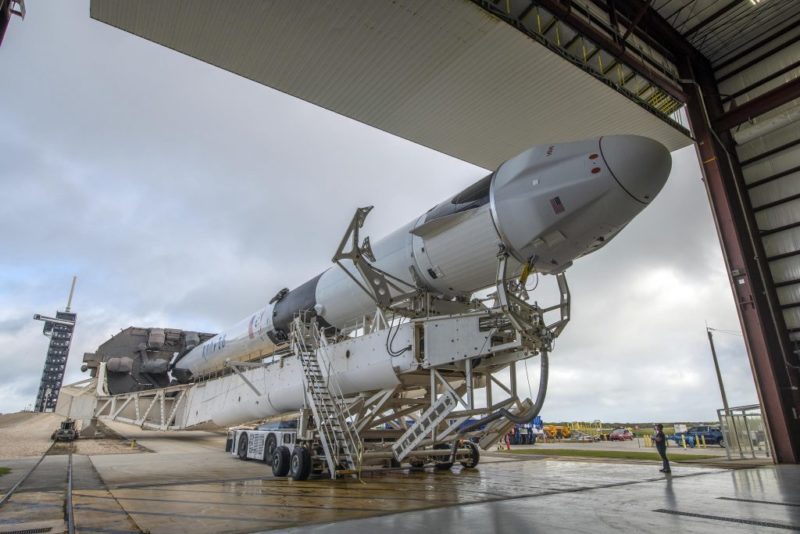
Weather conditions for Tuesday appeared decidedly iffy, with only a 30-percent chance that Mother Nature would awaken with a smile. Onshore-moving showers and a heightened probability of storms were expected to be accompanied by “extensive mid- and upper-level cloudiness”, producing what the 45th Weather Squadron at Patrick Space Force Base described as “less than favorable” for Tuesday’s launch attempt.
Potential violations centered upon the Cumulus Cloud Rule, the Thick Cloud Layer Rule and the Surface Electric Field Rule. However, as Tuesday morning’s countdown entered its final stage, the weather began to trend more favorably, as forecasters declared themselves “Green”.
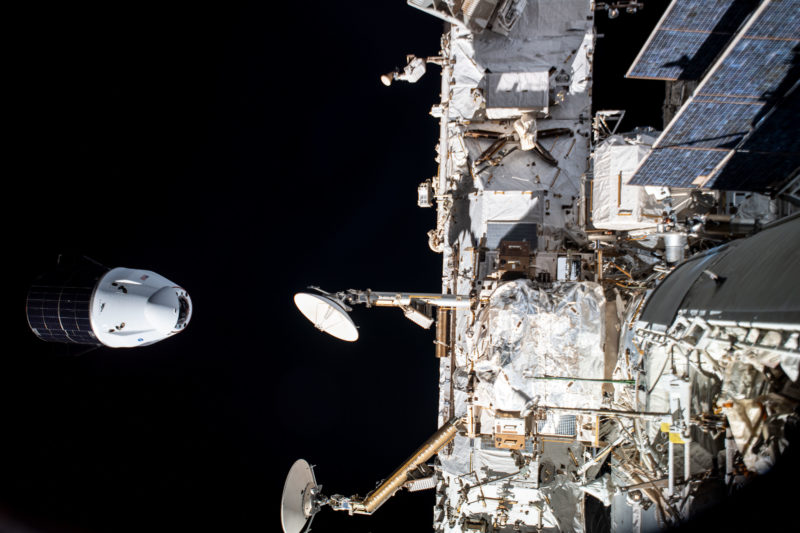
In readiness for CRS-24’s arrival, the Expedition 66 crew have been preparing hardware and rehearsing procedures in the last few days. Last week, they resized Extravehicular Mobility Unit (EMU) No. 3006.
This particular space suit—most recently worn by spacewalker Shane Kimbrough last June—also had its EMU Data Recorder (EDaR), EDaR Antenna, EDaR Antenna Cable and High-Definition EMU Camera Assembly (HECA) removed. EMU No. 3006 will return to Earth aboard the Cargo Dragon in January for refurbishment, having supported 20 sessions of Extravehicular Activity (EVA) since 2017.
The astronauts also relocated Station Support Computers (SSCs) from Japan’s Kibo lab and the Harmony node into the multi-windowed cupola, ahead of the CRS-24 arrival. They set up vehicle-specific and Rendezvous and Proximity Operations Program (RPOP) software and participated in computer-based training for roles and tasks on docking morning.
Aboard the Cargo Dragon is a multitude of scientific investigations, with Tom Marshburn having previously spoken about a busy period of research in the December-January timeframe.
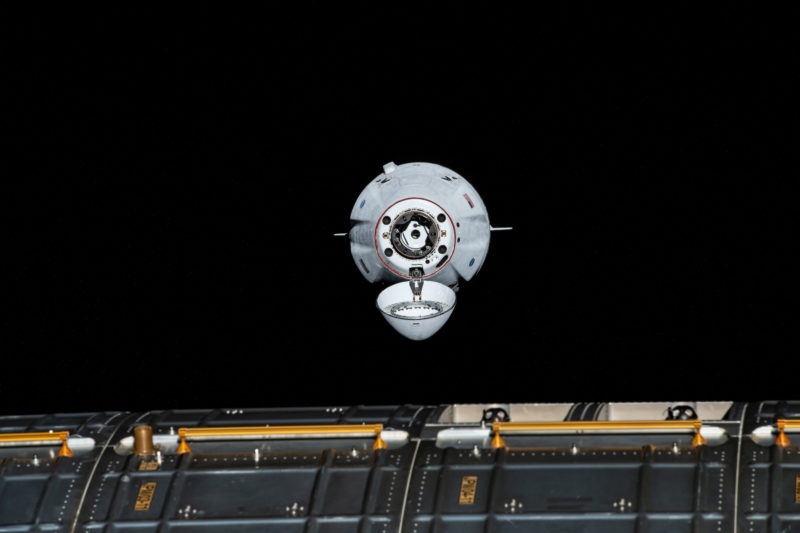
The Bioprint FirstAid study will evaluate a portable bioprinter—a hand-held tool to print biological structures, in the form of “bio-inks”, using viable cells and molecules—in order to create tissue-forming patches to cover wounds and accelerate healing. Bioprinting has already found several useful applications here on Earth, as a means of using inks made from a patient’s own cells for skin reconstruction after burn injuries.
Another experiment will crystallize a monoclonal antibody called pembrolizumab, the active ingredient of the Keytruda drug, which has been used to target multiple cancers. And the Host Pathogen study will culture cells from astronauts before, during and after long-duration space missions. It forms part of a wider-ranging research program to understand the risks posed by infectious diseases during deep-space exploration missions.
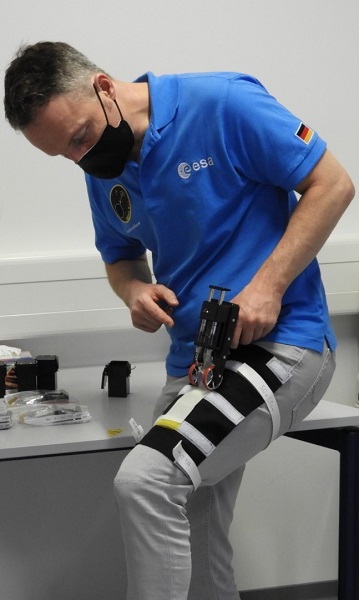
To date, Host Pathogen has involved ten astronauts who have flown missions of four months or longer, with pre-flight sessions at six and three months prior to launch, two sessions on the day of landing and a month later, and at least two in-flight sessions.
Elsewhere, a joint study between North Carolina State University and Greenville, Ind.-based Techshot, Inc., seeks to understand how plants sense and adapt to local environmental change. Also aboard CRS-24 is a test of the stain-removal ingredients of a fully degradable detergent for use in space. ISS crew members will perform stain application and removal using specialized pens and wipes, for subsequent observation after flight. And a commercial device to manufacture heat-resistant alloy components will be tested.
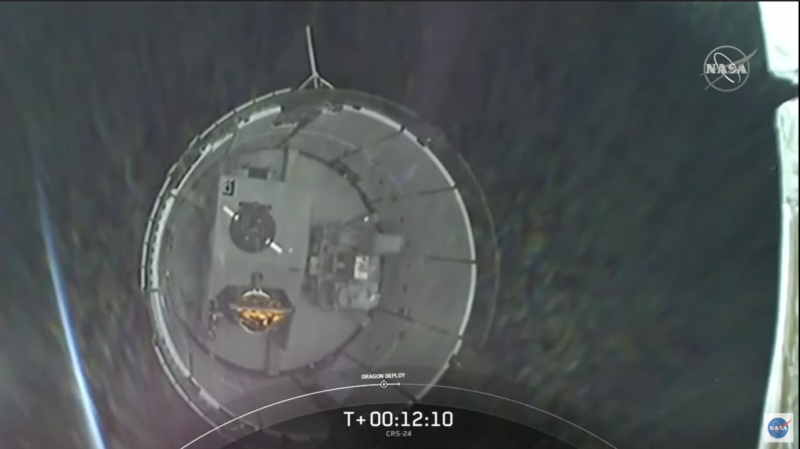
Liftoff of B1069 occurred on time at 5:07 a.m. EST Tuesday, the nine Merlin 1D+ first-stage engines of the brand-new core stage turning night into day across the slumbering Space Coast. A little more than two minutes into the flight, as planned, B1069 separated from the stack and commenced a smooth descent and on-point touchdown on the deck of the Autonomous Spaceport Drone Ship (ASDS), “Just Read the Instructions”, situated offshore in the Atlantic Ocean.
All of SpaceX’s drone ships—“Of Course I Still Love You” at Vandenberg, “A Shortfall of Gravitas” on the East Coast and JRTI herself—have seen service in the last few days, marking the first time that all three were simultaneously deployed at sea in support of returning Falcon 9s.
FOLLOW AmericaSpace on Facebook and Twitter!
Missions » ISS » COTS »



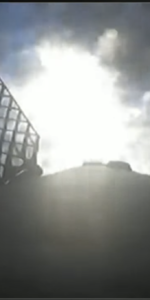
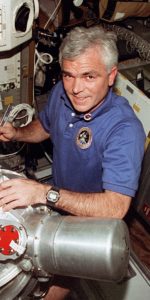
5 Comments
5 Pings & Trackbacks
Pingback:CRS-24 Returns to Earth, Wraps Up Month-Long ISS Stay – AmericaSpace
Pingback:SpaceX’s Launches Record-Tying Falcon 9, Looks Ahead to Busy March – AmericaSpace
Pingback:Crew-4 Aims for Pre-Dawn Wednesday Launch to Space Station - AmericaSpace
Pingback:SpaceX Scores Sixth Launch of April, Achieves Turnaround Record - AmericaSpace
Pingback:SpaceX Launches Transporter-5 Rideshare , Wraps Up Multi-Mission May - AmericaSpace